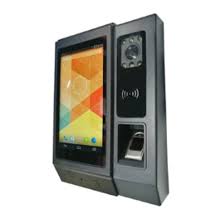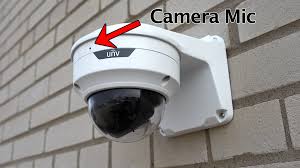Door controllers are essential components of access control systems that play a crucial role in regulating entry and exit to secure areas within a building or premises. These devices are designed to manage and monitor access permissions, ensuring that only authorized individuals can enter specific areas while maintaining security and preventing unauthorized entry.
Modern door controllers come equipped with advanced features such as biometric authentication, RFID card readers, keypad entry, and remote access capabilities. Biometric door controllers utilize unique physical characteristics like fingerprints or facial recognition to verify the identity of individuals seeking access. RFID card readers allow users to gain entry by presenting a proximity card or key fob to the controller, while keypad entry systems require users to enter a PIN code for authentication.
One of the key benefits of door controllers is their ability to integrate with other security systems such as CCTV cameras, alarms, and intercoms to create a comprehensive security solution. By connecting these devices, organizations can enhance their overall security posture and improve monitoring and response capabilities in case of security breaches or unauthorized access attempts.
Door controllers also offer flexibility in managing access rights by allowing administrators to set customized access levels for different users or groups. This granular control enables organizations to restrict access to sensitive areas while providing seamless entry to authorized personnel based on their roles or clearance levels.
In addition to enhancing security, door controllers contribute to operational efficiency by automating access management processes. Features like scheduled access control, real-time monitoring, and event logging help streamline security operations and provide valuable insights into access patterns and trends within the facility.
Overall, door controllers are indispensable tools for modern security systems, offering a blend of advanced technology, customization options, and integration capabilities to safeguard assets, protect personnel, and maintain a secure environment within various commercial and residential settings.
Understanding Door Access Controllers: Key FAQs Answered
- What is door access controller?
- What is the price of access door controller?
- What is the purpose of the access controller?
- What does a door access control system do?
- What does a door controller do?
- What is single door controller?
- What does a door jammer do?
What is door access controller?
A door access controller, also known as a door controller, is a security device used in access control systems to manage and regulate entry to secured areas within a building or premises. It serves as the central hub that authenticates and authorizes individuals seeking access through a specific door or entry point. Door access controllers utilize various authentication methods such as biometric verification, RFID card readers, keypad entry, or mobile credentials to grant or deny access based on predefined permissions. By integrating with other security components like locks, sensors, and alarms, door controllers play a pivotal role in ensuring secure and controlled access while enhancing overall safety and security measures within an organization.
What is the price of access door controller?
The price of an access door controller can vary depending on several factors such as the brand, features, scalability, and integration capabilities. Basic standalone door controllers with limited functionalities may be available at a lower price point, while advanced models with biometric authentication, RFID card readers, and remote access capabilities may come at a higher cost. It is advisable to consult with security system providers or vendors to get accurate pricing information tailored to specific requirements and budget considerations.
What is the purpose of the access controller?
The purpose of an access controller is to regulate and manage entry to secure areas by granting or denying access to individuals based on predefined criteria. Access controllers serve as the central component of an access control system, allowing administrators to set access permissions, monitor entry and exit activities, and enhance overall security within a facility. By utilizing technologies such as biometric authentication, RFID card readers, and keypad entry systems, access controllers ensure that only authorized personnel can gain entry to restricted areas while maintaining a high level of security and preventing unauthorized access attempts.
What does a door access control system do?
A door access control system is designed to regulate and monitor entry to specific areas within a building or premises by managing access permissions for individuals. This system utilizes devices such as door controllers, card readers, biometric scanners, and keypads to authenticate users and determine their eligibility to enter secured areas. By implementing a door access control system, organizations can enhance security, prevent unauthorized access, track entry and exit activities, and customize access levels for different users based on their roles or clearance levels. Overall, a door access control system plays a vital role in ensuring the safety of assets, personnel, and sensitive information within a facility.
What does a door controller do?
A door controller serves as a critical component of an access control system, responsible for managing and regulating entry to secure areas within a building or premises. Essentially, a door controller verifies the identity of individuals seeking access through various authentication methods such as biometrics, RFID cards, or PIN codes. By enforcing access permissions and restrictions, the door controller ensures that only authorized personnel can enter designated areas while preventing unauthorized entry. Additionally, door controllers offer integration capabilities with other security systems like CCTV cameras and alarms, enabling organizations to create a comprehensive security solution that enhances monitoring and response capabilities in case of security breaches or access violations.
What is single door controller?
A single door controller is a standalone device that is specifically designed to manage access to a single entry point, such as a door or gate, within a building or premises. This type of controller is typically used in smaller-scale access control systems where only one entry point needs to be secured. Single door controllers offer basic functionality for controlling access permissions, monitoring entry and exit activities, and ensuring that only authorized individuals can enter the designated area. These devices are compact, cost-effective, and easy to install, making them ideal for applications where a simple yet effective access control solution is required for enhancing security and restricting unauthorized access to a specific location.
What does a door jammer do?
One frequently asked question about door controllers is related to the functionality of a door jammer. A door jammer is a portable security device designed to provide an additional layer of protection for doors, particularly in situations where traditional locks may be insufficient. When placed at the base of a door, a door jammer creates a physical barrier that prevents the door from being forced open from the outside. This simple yet effective tool is commonly used in hotel rooms, dormitories, and homes to enhance security and peace of mind by reinforcing entry points and deterring unauthorized access.



